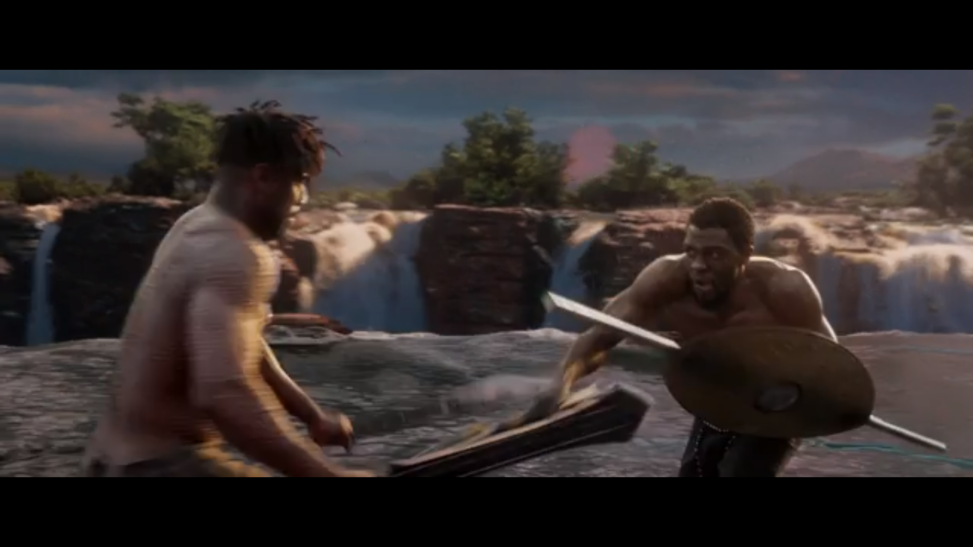Image Attribution: “Assignment 4, part A” by Anel Jazybayeva is licensed under CC0. (See interactive map)
Anel Jazybayeva, T00691233
November 21, 2021
VISA 1500_01
Dr. Terryl Atkins
Assignment 4, part A
The given image is a screenshot of one of my favorite and one of the most famous Marvel movies Black Panther (2018), at the 1 hour 19 minutes. The scene shows a ritual battle between the main character and his brother for the right to be the king of the isolated and technologically advanced kingdom named “Wakanda.” The film tells a story about how the primary heir to the throne of Wakanda, T’Chala, suddenly had a competitor in the person of his cousin.
The scene is meaningful for the development of the film’s plot. It tells the viewer that a second contender for the royal throne by blood appears with the seemingly obvious fact that the main character will become king. It is also an excellent example of a good mise en scene. That’s the reason why I choose this particular photo as an object of my analysis.
The fight takes place between two professional fighters using weapons, as well as hand-to-hand combat techniques. “Viewed as metaphor and as ritual, it depicts a process, and it is not the end or means in and of itself.” (Wynter, 2018, p.3). The initial goal of the fight is not to kill the enemy but to prove your physical superiority over them. The events unfold in a ritual place for fighting against the backdrop of a waterfall. The photo is a bit blurry, reflecting the dynamics and speed of the actions taking place on the screen. The camera movement is swift. It immerses the viewer in the atmosphere of a stubborn struggle. Scenes of violence and bloodshed are shown vividly and realistically. You can see the faces and emotions of the actors. Filmmakers used a wide screen, which creates an even greater sense of presence, because viewer can see whole picture.
This film is of great importance in promoting African culture to the masses. “Black Panther added a more positive representation of Black identity and culture which is generally lacking in popular culture.” (Bashonga, 2020, p1). Black Panther also destroys gender stereotypes regarding female warriors, as there are very bright female characters in the role of the royal guard. They are not sexualized to satiate the male gaze but are sheathed in the dignity and strength of warriors, offering a positive example for girls today (Wynter, 2018, p.2).
The film was very successful; it had a 100% rating on Rotten Tomatoes and earned $152 million for the one weekend after the premiere.
One negative aspect that I would like to emphasize about the movie is that the whole storyline of the Black Panther is based on physical violence, namely on the confrontation between the main character and the antagonist of the film. Violence is presented in it as a means of solving problems and disagreements.
References:
Wynter, D. E. (2018). Combat, Couture, and Caribbeana: Cultural Process in Coogler’s Black Panther (2018). Journal of Pan African Studies, 11(9), 92-96. GALE: A555411135
Bashonga, R. (2021). Home, Belonging, and Africanity in the Film Black Panther. The Oxford Handbook of Global South Youth Studies, 259.
“The Revolutionary Power Of Black Panther”, Jamil Smith, 2021 TIME USA, LLC.
